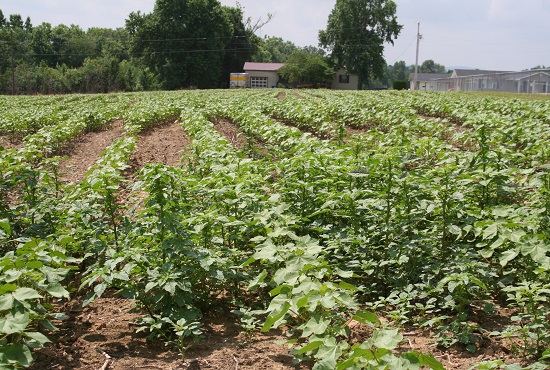Marketing Reality
Like most U.S. cotton farmers, Tom Gregory is excited and encouraged by the recent upswing in cotton prices.
The Petersburg, TX, grower says he sold cotton in 2010 for 85 cents a pound. That was the highest he’d ever sold cotton. But last year wasn’t Gregory’s operation’s first taste of success. Since moving home to farm in 1995, he has expanded acreage and farm infrastructure regularly. On a sunny day in early April, construction crews were plugging away at a new farm shop behind Gregory’s home.
“I’ve had a good seven or eight years in a row farming. We’ve been very fortunate over the past few years,” says Gregory.
But like nearly all of his neighbors in his West Texas farming community, Gregory knows all too well that there is a disconnect between what he considers success, and what the general public understands about current cotton prices.
For months, news reports have highlighted the unprecedented rise in cotton prices. Those headlines often send the wrong message to agriculture industry outsiders.
“It puts a lot of pressure on us as far as being a tenant and marketing that cotton. Those landlords see the newspaper and they see all this media and see $1.00 cotton or $1.50 or $2.00 cotton, and then they look at yours and you’re only getting 85 cents. Not to mention the guys who are only getting 67 cents. It’s kind of hard for some landlords to understand,” Gregory says.
High Cotton
To be sure, Gregory was more than pleased to have sold cotton at 85 cents in 2010. An almost ideal growing season helped him take full advantage of those market prices. The wettest spring that Gregory had seen since he began farming boosted yields.
“Our dryland yields were exceptional. They were some of the best dryland yields I’ve ever had. Typically out here we’ll make 250 to 500 pounds an acre on dryland. 500 pounds is typically great. And we had some 800 or 900 pound dryland yields last year, which is just unheard of, really,” says Gregory.
Gregory plants all of his cotton acreage to FiberMax varieties, with most of his dryland acres going to FM 9058F. Last year, Gregory planted FM 9180B2F, FM 9170B2F, FM 9063B2F and had a block of FM 9250GL in a production plot. He credits the advancements Bayer has made in yield with much of his success in recent years.
“We’ve been pretty true to FiberMax the last several years. We made that switch I guess in the late 90s. The FM 9063B2F has been a good cotton for us out here. It has been our bread and butter ever since FiberMax made the big push out here, which I believe was in the late 90s,” Gregory says.
But as Gregory saw his yields soar right along with cotton prices near the end of the 2010 growing season, he couldn’t help but be a little anxious about the prices his cotton would bring in.
Like many growers in West Texas, Gregory marketed 100% of his cotton in a pool last season. He put all of his crop in a Plains Cotton Cooperative Association pool.
“I didn’t get any $1.00 cotton or $2.00 cotton last year,” he says. “We had the PCCA representative come down here to a local gin and talk to us. For a lot of folks in the West Texas area, production was down due to the first of July being cold and wet for a week. The estimate on the amount of bales was just too high. Production was down from what they thought it was going to be, and so they priced a lot more of it earlier at a cheaper price than what they thought they were going to be able to price at the end.
“But like I said, 85-cent cotton is tremendous. I’ve never had it before. If you would’ve told me in January of 2010 that I was going to get 80-cent cotton, then I would’ve signed up all day,” he says.
Gregory says it is sometimes tough to realize that many of his neighbors were able to cash in on prices of $1.50 or higher. The Catch-22 for marketing cotton, he says, is that in order to really cash in on the highest prices, growers in West Texas must shoulder a high amount of risk in terms of crop damage due to weather.
“That’s sort of the thorn in the farmer’s side. We don’t have a way to market it. We can do a bale contract right now, but on a bale contract we have to furnish those bales at the end of the year. When you’re looking at November or December before the crop year starts, if you want to sign a bale contract, that’s pretty risky business. You don’t know if you’re gong to have the moisture to plant, or if you get held out. So really a bale contract is a big gamble for us,” he says.
Managing that risk is a big reason pools have become so popular in the Southwest, and a big reason Gregory plans on marketing at least half of his cotton in the same PCCA pool this season.
“If the pool takes care of their business, it’s a good way for cotton farmers to market their cotton. We’re not going to get the high and we’re not going to get the low. We’re going to stay in the median.
“It would be nice to have gotten $2.10 per pound or something like that. Those guys who got that price basically made two crops in one,” he says, laughing. “They could just take this year off, and the way this moisture’s looking this year, that might not be a bad idea.”








